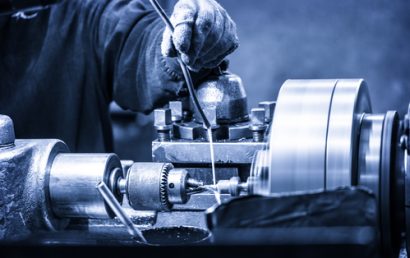Machining Tools: Introducing The Undercutting End Mill
Undercutting end mills are tools that offer maximum versatility and are well rounded overall. You may have heard these referred to as spherical ball end mills or lollipop cutters. When it comes to machining undercuts, they are the most common choice.
What Is an Undercut?
An undercut is a common feature of a part that is recognizable by one workpiece part hanging over another part. If you are using a standard end mill, it can be impossible (at best, difficult) to perform the needed uppercuts. To tackle this feature, a specialty tool as needed. Because they can be used for a variety of operations, end mills are a good thing to include in your tool repertoire. Though they are frequently singular-use associated, this couldn’t be further from the truth.
Undercutting
Given the name, it should come as no surprise that undercutting operations are perfectly executed by this tool. Particularly if you need to rotate a workpiece, it can be time-consuming and tricky to create an undercut. Wrap angle availabilities for undercutting end mills are most commonly 300°, 270°, and 220°.
Edgebreaking and Deburring
A wrap angle of more than 180° is required for undercuts. For this reason, including the underside, undercutting end mills are well suited to edge breaking or deburring anywhere on the workpiece. You can save money and time by employing your undercutting end mill to do the deburring of your parts. To create a part that is safe to handle and feels and looks like a finished product, a final critical step to the creation of a part can be the edgebreaking operations. Once again, an undercutting end mill is perfect for the job and can, in one shot, do an entire workpiece.
Slotting
Ordinarily, end mills are not thought of by most machinists as being ideal for slotting. Quite the contrary is true, however. Rather than changing over to a ball end mill, you can save time by slotting with an undercutting end mill. For slotting, the best suited undercutting end mill to use (on the average) would be those with thicker necks and lower wrap angles.
Profiling and Contouring
For both complicated and a simple profiling and contouring operations, undercutting end mills are useful thanks to their increased clearance and wrap angle. Particularly in the case of 5-axis milling, rather than using several tools for the job, a single tool can be used for the entire operation thanks to the versatility of an undercutting end mill. For complex profiling and contouring operations, the highest level of versatility is offered by reduced shank undercutting end mills.
Is There a Difference Between Undercutting End Mills?
On an overall basis, there is a distinct similarity between most undercutting end mills. There are, however, slight differences that make one undercutting end mill more appropriate for a specific job than is another. Some of the regularly stocked, standard undercutting end mills consist of the following:
- Deburring
- High Helix
- Reduced Shank
- Standard Shank
At A&A Coatings, we have the appropriate protective coating for any piece of machinery, any tool, product, or component. With today’s thermal spray coatings, the life expectancy of any treated substrate is increased exponentially. To find out how spray coatings can benefit you, your business, and your industry, contact us today to speak to one of our seasoned professionals. Every moment that you put off contacting A&A Coatings means more unnecessary wear and tear on your parts and machinery.



